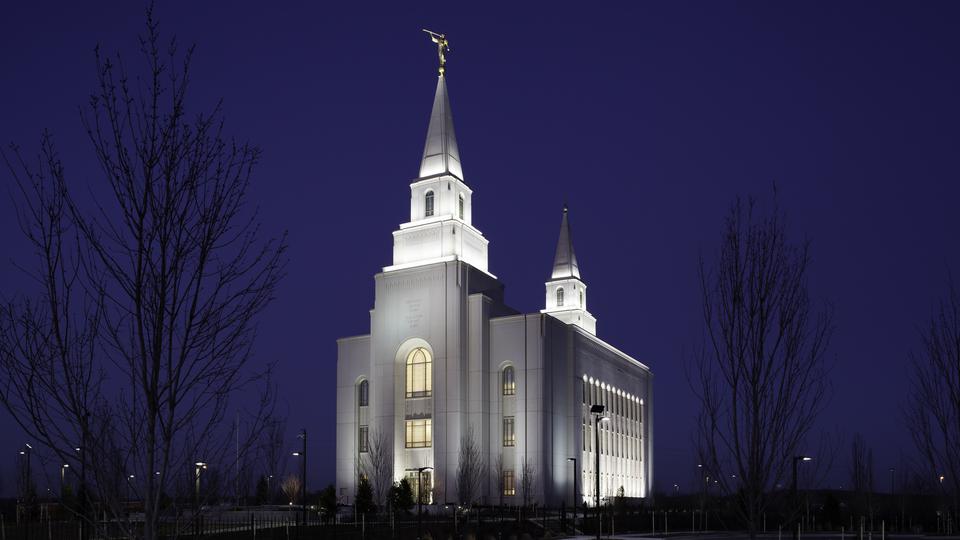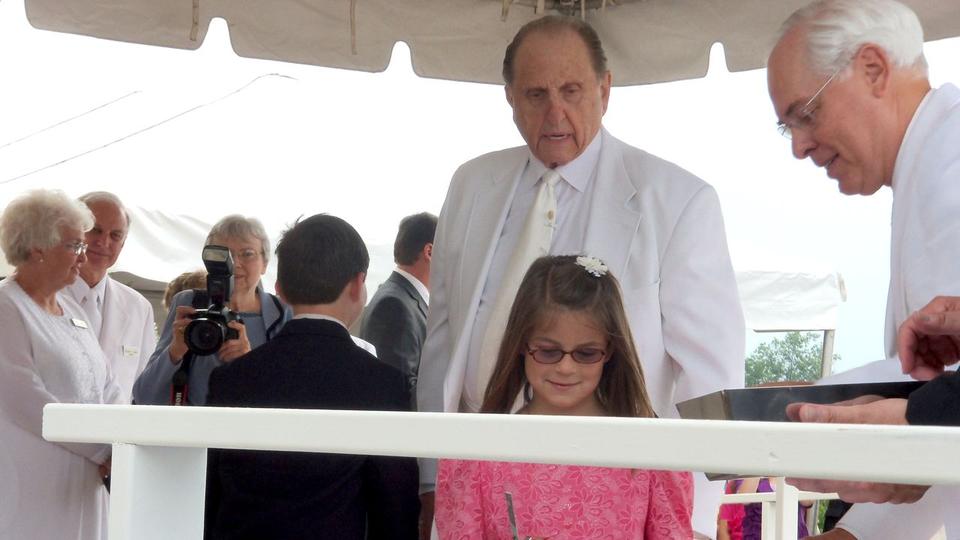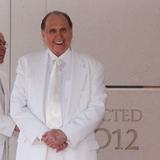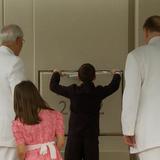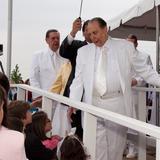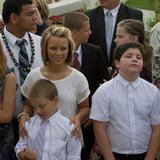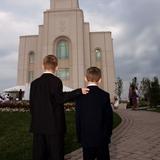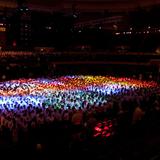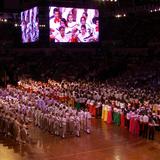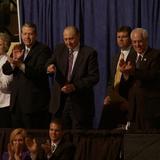The Kansas City Missouri Temple was formally dedicated Sunday in three sessions by President Thomas S. Monson of The Church of Jesus Christ of Latter-day Saints ( Mormon). The dedicatory sessions were broadcast to congregations of the Church within the temple district.
President Monson said this “stately and magnificent temple in the lovely part of the country, really the heartland of America, ... will shine as a beacon of righteousness to all who will follow its light — the light of the gospel, the light of the Savior.”
Elder Jeffrey R. Holland of the Quorum of the Twelve Apostles and Elders William R. Walker and Donald L. Hallstrom of the Seventy accompanied President Monson during the weekend's events.
The purpose of a temple dedication ceremony is to set aside the building for the work of God. A Latter-day Saint dedication ceremony includes a special prayer designating the building for Church use and asking God to bless the structure and grounds. A dedication ceremony generally also includes music and talks from Church leaders.
Prior to the dedication, President Monson sealed the temple cornerstone, a tradition marking the end of construction and the beginning of the sacred work inside the temple.
| The exterior of the Kansas City Missouri Temple at night 2012 Intellectual Reserve, Inc. All rights reserved. | 1 / 10 |
And on Saturday, more than 3,000 Latter-day Saint youth performed in a cultural celebration titled "Of One Heart in the Heartland." Cultural celebrations are held prior to temple dedications to recount the history of the area through song and dance.
The Kansas City Missouri Temple is the Church's 137th temple worldwide, 67th in the United States and second in Missouri. The temple will serve some 45,000 Latter-day Saints in 126 congregations throughout Kansas, Missouri and small portions of Oklahoma and Arkansas.
Plans for a temple in Kansas City were announced by the First Presidency of the Church on 4 October 2008. Construction began with a formal groundbreaking on 8 May 2010.
While tens of thousands of Church meetinghouses are open to all people who wish to attend religious services there, temples, like the Kansas City Missouri Temple, are open only to faithful Latter-day Saints after they are formally dedicated. (See a Mormon Newsroom article explaining the difference between the Church’s chapels and temples.)
Latter-day Saint temples differ from the meetinghouses or chapels where members meet for Sunday worship services. Temples are considered “houses of the Lord” where Christ’s teachings are reaffirmed through baptism and other ordinances that unite families for eternity. In the temple, Church members learn more about the purpose of life and make covenants to follow Jesus Christ and serve their fellow man.
The Church’s History in Missouri
The Church has early roots in the Kansas City area. Six months after the Church was organized in April 1830, Joseph Smith called missionaries to travel to the frontier of western Missouri to preach to Native Americans living in Indian Territory (Kansas).
Joseph Smith arrived in Independence in July 1831 and designated the area as a gathering place for Latter-day Saints. Thousands of followers soon arrived. Over the next few years, the Mormon settlement expanded beyond Jackson County into the area that is today the Country Club Plaza. In 1833 the Latter-day Saints left Jackson County, heading north into Liberty in Clay County. They later settled in Daviess and Caldwell Counties, created by the Missouri legislature specifically for the Mormons. About 15,000 Mormons left Missouri in 1838-39, settling in Nauvoo, Illinois, until 1846, when they began their journey across the plains to the Salt Lake Valley.
The Church returned to Kansas in 1895, when an office for the Central States Mission was established in St. John, Kansas. This regional office was moved to Kansas City, Missouri, in 1900 and then to Independence in 1907. Since that time, local Church membership in the metropolitan area has grown to over 22,000.
